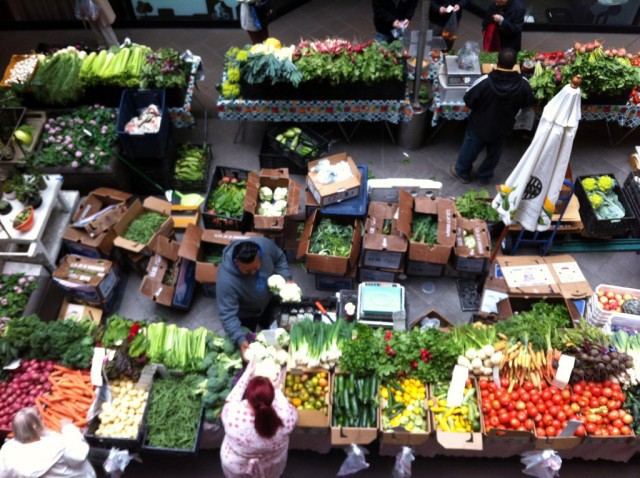The Cost Of Food In 2050
by Bhavya Reddy

We all know that sea levels are rising, but the cost of food may be rising too. By how much? The short answer: it’s still kind of up in the air.
There’s a huge variation in projections of how much food costs will rise by 2050, with one study by the Intergovernmental Panel on Climate Change (IPCC) giving a range of 3 to 84% if considering just the impacts of changes in heat and rainfall. According to the International Food Policy Research Institute (IFPRI), “world grain prices will increase a further 30 to 50 percent over the period 2005 to 2050, while meat prices in the same period will increase an additional 20 to 30 percent beyond the levels seen in 2007/2008.”
Some of these increases are likely to occur no matter what we do. Even if we’d stopped all emissions in 2000, prices would be expected to increase by 33.1% for corn, 18.4% for rice, and 23.4% for wheat by 2050. A more pessimistic scenario projects an increase of more than 100% for corn.
While it might seem like a given that prices always get higher and that increases are to be expected, that’s not necessarily the case. For most of the past century, “real agricultural prices declined” but “will likely increase between now and 2050, the result of growing incomes and population as well as the negative productivity effects of climate change.”
This is a problem in countries where people rely on staple grains for food, but the effects can be seen in processed food as well:
If left unchecked, the effects of climate change on basic crops — like rice, wheat, and corn — could drive up the cost of Kellogg’s Frosted Flakes in the U.S. by up to 20 percent by 2030, according to Oxfam’s analysis. Corn Flakes could also rise up to 30 percent in the U.S., and up to 44 percent in the UK. And that’s on top of any other price increases due to inflation.
The good news is that after this report was released, there was enough pressure put on companies to change that they started to consider decreasing the environmental impacts in their production process:
[M]ore than 640,000 [consumers] have engaged with Oxfam’s analysis by telling brands to do more. The response to Oxfam’s campaign shows the power of consumers to influence what happens deep inside the supply chains of companies.
And companies changing their policies can actually be significant:
Oxfam analyzed the emissions from 10 companies, including Associated British Foods, Coca-Cola, Danone, General Mills, Kellogg, Mars, Mondelēz International, Nestlé, PepsiCo, and Unilever, and found that their combined greenhouse gases, if thought of as a single country, would rank them as the 25th most emitting country in the world…
However, while companies are pledging to reduce their emissions, national governments are not moving quickly enough. For instance, in the climate negotiations that are currently going on and which will culminate in Paris later this year, if all countries submitted plans similar to the EU, US, and China, the temperature would continue rising beyond 2ºC. In order to further limit warming to 1.5ºC, carbon emissions would need to be completely eliminated by 2050.
What would be the cost of reducing emissions? One study that looked at reducing American carbon emissions by 80% by 2050 suggests it would cost 1% of our GDP. One key proposed action for reducing carbon emissions is installing technology for drilling:
Oil and gas companies must also take action to eliminate the release of methane, a greenhouse gas more than 20 times as powerful as carbon dioxide, which is set free in operations such as fracking. Most companies fail to do this, even though it is technically possible and costs on average only 1% more than extraction without the right technology … one which most companies ignore as they are not penalised for the release of the powerful greenhouse gas.
Another suggests that companies could save billions of dollars on energy bills if they “invest on average 3 to 4 percent of total capital expenditures each year on low-risk, profitable carbon reduction projects.”
So, corporations and governments may have to commit paying 1 to 4% more to avoid increases in the price of food of more than 18.4% for the rest of us. Like rent, the cost of food may increase, but there might still be something that can be done about it.
Bhavya Reddy is currently working on a master’s in environmental engineering, taking as many photos as possible, and thinking about questions like if it’s possible to travel more and hurt the environment less. Read more on her blog.
Support The Billfold
The Billfold continues to exist thanks to support from our readers. Help us continue to do our work by making a monthly pledge on Patreon or a one-time-only contribution through PayPal.
Comments